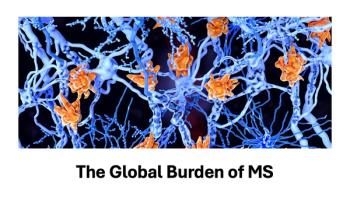
How to reduce healthcare spending through MTM
A large chunk of what insurers spend can be saved by improving medication adherence through medication therapy management done right.
The ability to maintain good health is priceless, but saving billions in healthcare spending while improving patients’ lives is within reach even as medication costs skyrocket.
One metric that illustrates the importance we place on our welfare is healthcare spending, which in 2013 totaled
Marc O'ConnorMedication nonadherence is a serious problem, with the World Health Organization noting that the average
According to a meta-analysis published in the Annals of Internal Medicine, Americans are failing to comply with medication prescriptions for a variety of reasons,and it's costing anywhere between
As it relates to pharmacotherapy, payers need to ensure stellar adherence to high-cost therapies among their patients.
With the advancement of technology, existence of robust data sets and unparalleled access to medical knowledge, pharmaceutical manufacturers are now able to create curative therapies. The value of a
Without assurance of outstanding adherence, insurers are rightfully wary of the growth in development, cost, and prescription of new specialty therapies. Insurers have become increasingly aggressive about keeping medication costs down causing the manufacturers’ window of opportunity to recoup R&D costs and deliver acceptable returns for shareholders to shrink from several years to as few as 12 weeks.
With outstanding adherence, however, manufacturers may be willing to accept some of the payers’ risk in the realization of the value of high cost, highly effective medication therapies.
Last month we announced the availability of our medication therapy management (MTM) services for Virginia Premier members.
“Adherence to proper medication therapy protocols has the capability of improving patient outcomes and lives while simultaneously reducing costs,” says Javier Menendez, Associate Vice President of Pharmacy for Virginia Premier Health Plan.
Virginia Premier Health Plan, Inc. (VPHP) is a nonprofit Managed Care Organization with more than 185,000 members. Owned by the Virginia Commonwealth University Medical Center, VPHP was formed to coordinate healthcare for low-income persons.
We believe that medication therapy management done right is an economically viable solution that improves outcomes while reducing costs and providing "near clinical trial" conditions by which medication therapies realize their full value.
MTM services should include complete medication assessment and reconciliation, prior authorization assistance, patient education, individualized adherence plans, custom adherence packaging and ongoing monthly support through assignment of a dedicated patient care coordinator and a clinical pharmacist for each patient enrolled.
Pharmacist-led medication management protocols have been proven to
A study published in the American Journal of Pharmacy Benefits found that HIV patients on highly active antiretroviral therapy participating in Curant’s MTM protocols who demonstrated adherence of 95% or better (the commonly applied standard of adherence for highly active antiretroviral therapy)
In addition to closely monitoring results for the Virginia Premier patients we onboard, we are continuing to validate our MTM protocols’ efficacy in studies with Johns Hopkins and two other leading medical centers to be announced. We expect results of those programs later this year.
“Streamlining the prior authorization process through clinical oversight, and provision of data that yields a comprehensive view of patient adherence to medication therapies are key deliverables” Mendez said.
The same goes for the nascent PSCK9 class of “uber statin injectables,” which have been shown to sharply lower LDL (cholesterol levels) in high-risk patients. At $1,000 per month for the rest of a patient's life, payer pressure on clinicians to have their patients exhibit outstanding adherence will be immense. With MTM, this pressure can be relieved and treatment becomes personalized and effective.
The relationship between healthcare practitioners and their patients, as well as open, ongoing communication between other healthcare stakeholders, is essential to combating medication nonadherence to the benefit of the entire healthcare continuum: clinicians, payers, patients and pharmaceutical manufacturers.
Marc O’Connor is Chief Operating Officer for Curant Health. Curant Health treats patients nationwide through its medication management protocols, including medication reconciliation and establishment of personalized medication regimens.
Newsletter
Get the latest industry news, event updates, and more from Managed healthcare Executive.






















































